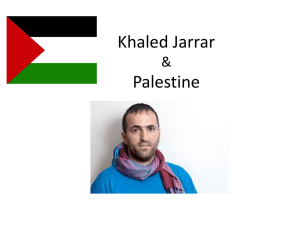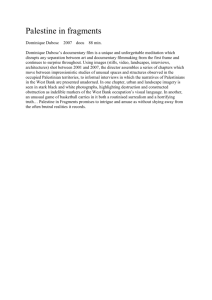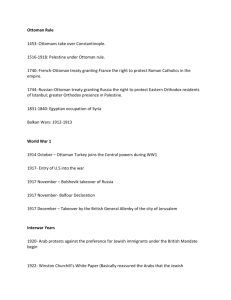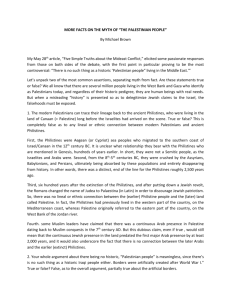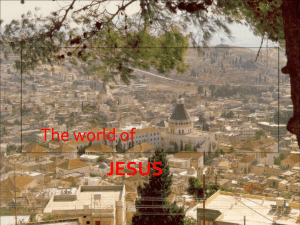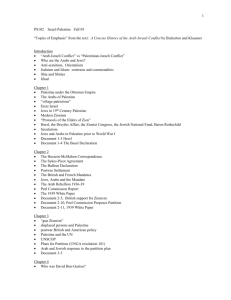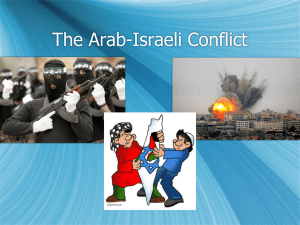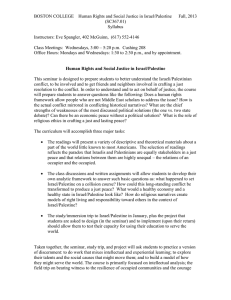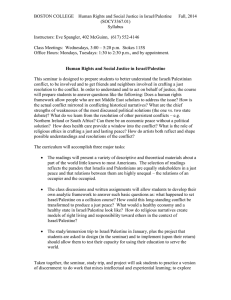PART ONE
advertisement
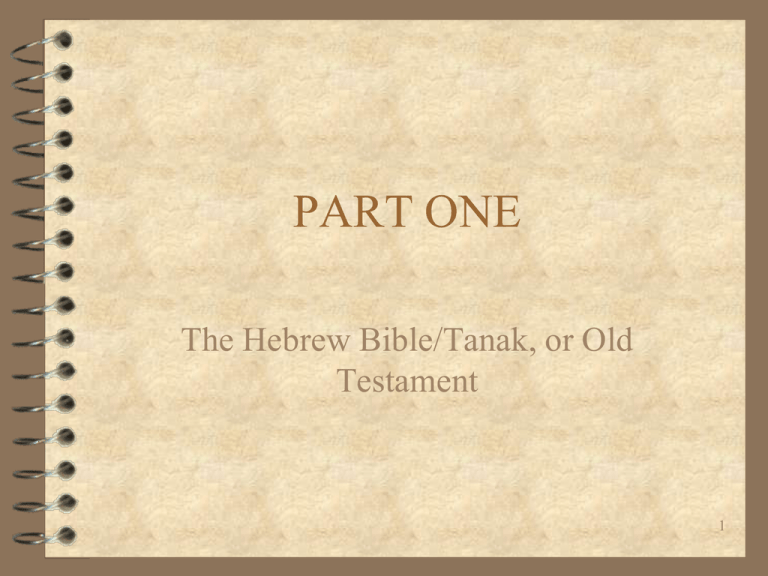
PART ONE The Hebrew Bible/Tanak, or Old Testament 1 Chapter 3: “The Ancient Near East: The Environment that Produced the Bible” (pp. 4069/36-61) 2 The Ancient Near East: The Environment that Produced the Bible -S. L. Harris, Understanding The Bible, Seventh edition, Table 3.1 “Some Major Events in the History of Biblical and Other World Religions” (pp. 42-44) -In the Eighth edition: Table 3.1, pp. 40-42. pp. 3 Ancient Near Eastern Geography: Figure 3.1, p. 41/37, “Map of the ancient Near East”; Figure 3.12, “Map Of Canaan…”, p. 59 in 7th edition; and Figure 3.13, “…Four Main Geographical Regions of Palestine….” p. 53 in 8th edition of Textbook. . Websites: www.bibleatlas.org; www.searchingthescriptures.net . 4 The Ancient Near East; The Fertile Crescent; 5 The Area of the Ancient Near East with modern States. 6 The Fertile Crescent. 7 Natural Resources of the ancient Near East. 8 Mesopotamia/ “Land Between the Rivers”; - the Tigris and Euphrates Rivers; 9 Mesopotamia: “The Land Between the Rivers.” 10 Mesopotamia (pp. 46-55): The Epic of Gilgamesh (pp. 49-51/44-46); Cuneiform Writing (Fig. 3.5/3.6); Ziggurat (Fig. 3.6/3.7); The Law Code of Hammurabi (18th Century B.C.) (pp. 5155/47-49; Figs. 3.8 and 3.9/3.9 and 3.10); 11 The Flood Tablet relating to the Story of Gilgamesh.. 12 Egypt, the First National State (pp. 55-58): Hieroglyphs (Fig. 3.11/3.12). 13 Egypt and the Nile River. 14 15 Canaan and Israel (pp. 58-63)/Egyptian-Israelite Affinities (pp. 51-52): - A land bridge between two great world powers, namely, Mesopotamia and Egypt; 16 Western Palestine and Eastern Palestine: Dimensions: The modern state of Israel: 20,770 square kilometres/8,019 square miles; Palestine Territories: 6,020 square kilometres; Jordan: 89,342 square kilometres; Nova Scotia: 55,491 square kilometres; Populations: NS: less than 1 million; Israel: ca. 7,602,400; Jordan: ca. 6,269,285. 17 18 Western Palestine and Eastern Palestine (see handout): Extent: - Fertile land in the country: 20,000 sq. km; Comparison with Nova Scotia: 55,491 sq. km (21,425 sq. miles); - From Dan to Beersheba: 220 km; - From Dan to Elath on the Red Sea/Gulf of `Aqaba/Elath: 410 km; 19 20 Dimensions: - From Mediterranean Sea to the Jordan River: an average of 80 km; - From Haifa to the Sea of Galilee: 45 km; - From Gaza to the Dead Sea: 98 km; - Inhabited land in eastern Palestine/Transjordan is 40 km wide; - Fertile land in the country: 20,000 sq. km; 21 Climate: - The Middle East year may be divided into three seasons: - Summer, from mid-June to mid-September; - Rainy season from mid-October to midApril; and - Transitional seasons which comprise the remainder of the year (desert storms and Sirocco/Khamsin; 22 Climatic Regions: - Mediterranean zone (average annual rainfall is 300 mm); - Semi-arid transition zone (average annual rainfall is 50-300 mm); and - Arid or desert zone (50 mm or less of precipitation per year); - highest annual precipitation in Nova Scotia is ca. 1600 mm. 23 24 Palestine may be divided into four main geographical sections (from west to east) (see Fig. 3.12/3.13): 1. The Coastal Plain; 2. The Central Hill Country; 3. The Great Rift Valley; and 4. Transjordan. Israel’s chief cities were located in the Central Hill Country. 25 26 Palestine - Relief Map. 27 Palestine as a Land Bridge: - Israel’s successive domination by Assyrians, Babylonians, Persians, Greeks, and Romans; - Israel divided into two states for most of its history: - Ten northern tribes formed the Kingdom of Israel; Samaria was its capital; - The tribes of Judah and Benjamin formed the much smaller Kingdom of Judah; Jerusalem was its capital. 28 29 30 Two Main, North-to-South Highways: - The Way of the Sea/Via Maris (Ex 13.17); and - The King’s Highway (Num 20.17; 21.22). See: searchingthescriptures.net 31 32 North-South Highways. 33 We will return to this chapter throughout the course; especially to the chronology and geography. . 34 Questions: 1. Give, in outline form, the major events in the history of the Bible from ca. 1200 B.C.E. to 90 C.E. 2. Describe the location of “the Promised Land” relative to the major powers of the first millennium B.C.E. 3. Describe clearly, using the map provided as a guide, the major geographical zones of “the Promised Land.” 4. Indicate on the map provided the major centers of interest for both the OT and NT. 35 5. Indicate on the map provided the two main north-south highways of the “Land of the Bible”. 6. “Questions for Review” and “Questions for Discussion and Reflection” (p. 68). PEACE! 36


